One of the reasons that I came to work at the American Museum was the opportunity to care for the fabulous quilt collection. I am a quilter and the chance to get up close and personal with the beautiful examples in this collection was too good to miss.

Baltimore Album Quilt
When I started at the Museum I thought that my favourite textiles would be those that I could never hope to create myself – the jaw-droppingly stunning Baltimore Album quilts or meticulously hand-quilted Amish quilts. But it is a collection of rather more humble works that have captured my heart – the Museum’s Red Cross quilts.
What draws me to these quilts is not the quality of the workmanship, but the story behind them and their arrival in the UK. For me these bed coverings – almost more than anything else in the Museum’s collection – embody the founders’ vision of uniting the UK and the USA and celebrating that relationship between them. As we approach the anniversary of VE Day, this seems like an appropriate time to share some of them with you.
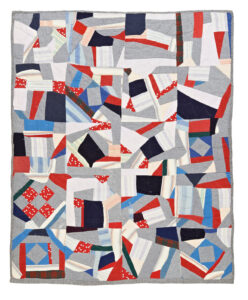
Crazy Patchwork Red Cross Quilt
How did they come to the UK?
During the Second World War, the Red Cross worked on many relief projects to ease the suffering of people directly impacted by the war. One such project was to send quilts to soldiers, or to those who had lost their home due to bombing raids. These quilts are now collectively known as Red Cross Quilts.
This quilt belonged to an evacuee staying with her aunt in Shipton-under-Wychwood. As president of the local Women’s Institute, her aunt oversaw the local distribution of Red Cross quilts.
Who made the quilts?
The Red Cross did not make the quilts that they sent to Europe. Instead they asked quilt-makers in America and Canada to donate quilts to their local Red Cross office, where they were processed and sent to those who needed them in Europe. Because they were needed at short notice – and during wartime – these quilts were often made from fabrics that were already in quilters’ “stashes”, or up-cycled from old clothes.
Lavinia Rennles chose this quilt made of suit fabric after her house in Surrey was hit by a bomb in 1944. She treasured it so much that she never used it because she was afraid she would spoil it.
Quilt Design
Little attention was paid to the aesthetic design of the quilt – the focus was on warmth and a speedy completion. Nevertheless many of these scrap quilts now have an almost modern art appearance, especially when hung vertically on a wall. It is likely that more intricate quilts were made from pre-pieced quilt tops that were already in a chest waiting to be completed (an infamous UFO – any quilter will have at least one in their collection)!
The top of this quilt was probably in someone’s stash. The design is more intricate than other Red Cross quilts that were assembled in a hurry.
The Museum has ten Red Cross quilts in its collection. These pieces are often quite simple and basic in construction and design. By their very nature they have been assembled in a hurry and the quilt-makers have utilised any available fabric stashes and shortcut techniques – such as using pre-pieced quilt tops and opting to tie layers instead of quilting them.
The binding of this quilt has been machine-stitched on both sides. Traditionally, binding is sewn by hand on one side so that the stitches are hidden. Here they are visible and it is likely that speed of completion over aesthetic perfection was the priority.
Who received these quilts?
One of the lovely things about these quilts, is that we often know a little more of their history than some of the other pieces in our collection. Sadly, we do not know anything about the people who made any of these quilts but we do know something about some of the recipients. It is clear from the stories that accompany them that they brought great comfort and were treasured by those who received them.
A Red Cross nurse stationed at Ely Grange in Frant, Surrey was the recipient of this quilt from a bundle sent over from Baltimore. Despite being much used and washed it is still in good condition.
As I write this, we are experiencing another worldwide crisis and living with so much uncertainty. These times are stressful for us all and, like the recipients of these Red Cross quilts, I too have been finding solace in quilts – in my case stitching my own. The repetitive action of needle through fabric calming my mind and helping me to relax. I am sure I am not alone in continuing to find comfort from quilts.
Have you got a Red Cross quilt?
Although these quilts all have different patterns and styles, many of them have similar characteristics. Here are a couple of things to look out for.
Labels
The tell-tale ‘Red Cross’ label sewn onto the back of the quilt. It is a small name tape style label with the Red Cross name and logo printed onto it.
Backing
Many of the quilts were backed with fabric provided by the Red Cross. This striped fabric is a light grey colour with red and blue stripes. In some of the Museum’s examples, the backing has been folded around to the front to create the binding.





 Buy Tickets
Buy Tickets



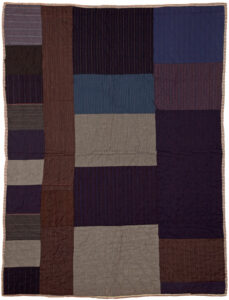
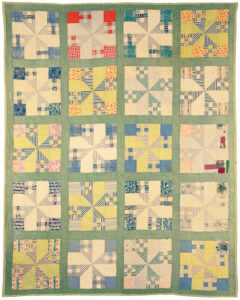

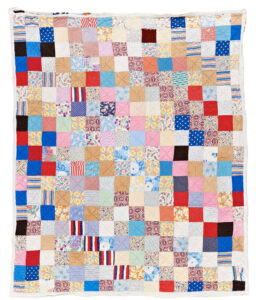

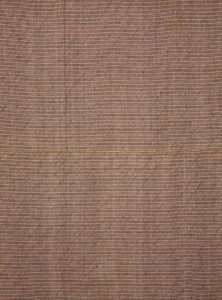
 Previous
Previous
 Back to top
Back to top